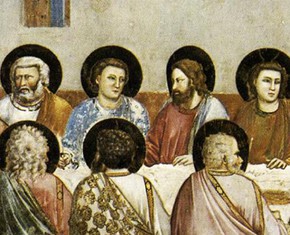The views expressed in our content reflect individual perspectives and do not represent the authoritative views of the Baha'i Faith.
The Baha’i writings say that hell is a metaphor—not a physical place of torment, but a self-imposed spiritual state:
Think ye of love and good fellowship as the delights of heaven, think ye of hostility and hatred as the torments of hell. – Abdu’l-Baha, Selections from the Writings of Abdu’l-Baha, p. 245.
Existential paradise and hell are to be found in all the worlds of God, whether in this world or in the heavenly realms of the spirit, and to gain these rewards is to attain life eternal. …
The ultimate rewards consist in spiritual bounties and bestowals, such as the manifold gifts of God that are vouchsafed after the ascension of the soul, the attainment of the heart’s desire, and reunion with Him in the everlasting realm. Similarly, ultimate retributions and punishments consist in being deprived of the special bounties and unfailing bestowals of God and sinking to the lowest degrees of existence. – Abdu’l-Baha, Some Answered Questions, newly revised edition, pp. 258-259.
Light must be spread afar, so that, in the school of humanity, all may acquire the heavenly characteristics of the spirit, and see for themselves beyond any doubt that there is no fiercer hell, no more fiery abyss, than to possess a character that is evil and unsound; no more darksome pit nor loathsome torment than to show forth qualities which deserve to be condemned. – Abdu’l-Baha, Selections from the Writings of Abdu’l-Baha, p. 136.
Of course, to experience “hell” depends on the spiritual sensitivity of the departed soul, which is something we cannot necessarily take for granted. If one is spiritually insensitive in this life and has, through a process of willful choices, become inured to guilt, it might well be that such a one could remain spiritually complacent or oblivious after this life, at least for some appropriate duration.
In his books on near-death experiences, Raymond Moody described a related model of experience that might well account for these heedless souls, as well as for those subjects in his first work who, while having experienced clinical death, could not recall an afterlife experience. This is a realm of “bewildered spirits,” a condition in which souls seem trapped between the physical and spiritual worlds of existence.
According to accounts by Moody’s subjects, these spirits seem oblivious, heedless, dulled. They are physically dead but are still emotionally attached to the physical world:
First, they state that these beings seemed to be, in effect, unable to surrender their attachments to the physical world. One man recounted that the spirits he saw apparently ‘couldn’t progress on the other side because their God is still living here.’ That is, they seemed bound to some particular object, person, or habit. – Raymond Moody, Reflections on Life After Life, p. 18.
Like the subjects who experienced the “unpleasant limbo,” these souls were not doomed to dwell in a condition of bewilderment eternally; they were to be there only until they resolved whatever problem, difficulty, or attachment was keeping them in that perplexed state.
Unlike the subjects in this “unpleasant limbo,” and unlike the subjects who experienced the guilt and shame during their panoramic life review, these “dulled spirits” do not seem to be in a state of guilt or regret; they are, instead, oblivious to what has happened to them, “not knowing who they are or what they are.” – Ibid., p. 20. They are thus between worlds, unable to return to the physical realm but uninterested in finding out what is in store for them. They are insistently attached to the physical existence in which they can no longer participate, or else they are spiritually blind, unable to perceive the world of the spirit. Some even try “unsuccessfully to communicate with persons who were still physically alive.” – Ibid., p. 21.
With the enhanced portrait of negative afterlife experiences offered in Reflections on Life After Life, Moody dramatically alters the dominant impression created by his first work and gives a kind of empirical confirmation for the principles governing the unpleasant afterlife experiences discussed in the Baha’i writings. For example, Moody’s evidence clearly demonstrates a relationship between one’s conduct in the physical world and one’s subsequent experience in the afterlife. The evidence also implies a more complex response to the individual life than the simplistic, two-part division of a heaven and a hell. In fact, Moody correctly asserts that there is no reason to doubt that there are endless possibilities:
I want very much for others to avoid taking my list of common elements as being a fixed, exhaustive model of what a near-death experience must be like. There is an enormously wide spectrum of experiences, with some people having only one or two of the elements, and others most of them. I anticipate that the list I have developed will be added to, modified, and reformulated. – Ibid., p. 87.
How can each one of us avoid these negative experiences in the afterlife? The Baha’i teachings say we must find our true purpose here in this physical existence, and apply ourselves to a process of spiritual growth, both in this life and the next:
Both before and after casting off this elemental frame, the human soul progresses in perfections but not in station. … And as the perfections of man are infinite, he can also advance in these perfections after his ascension from this world. – Abdu’l-Baha, Some Answered Questions, newly revised edition, p. 273.
















Comments
Sign in or create an account
Continue with Googleor